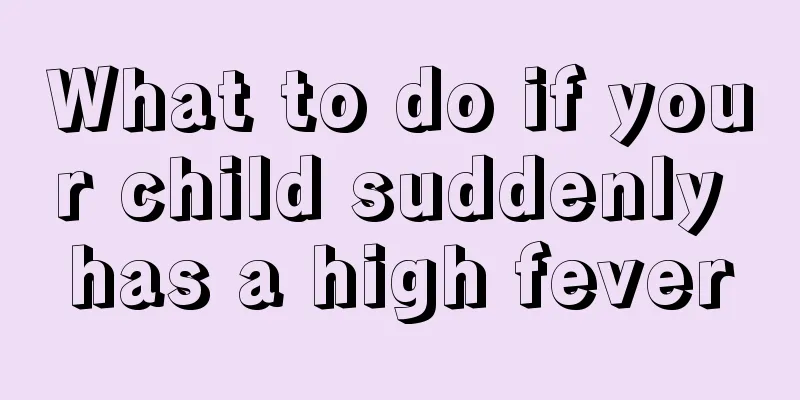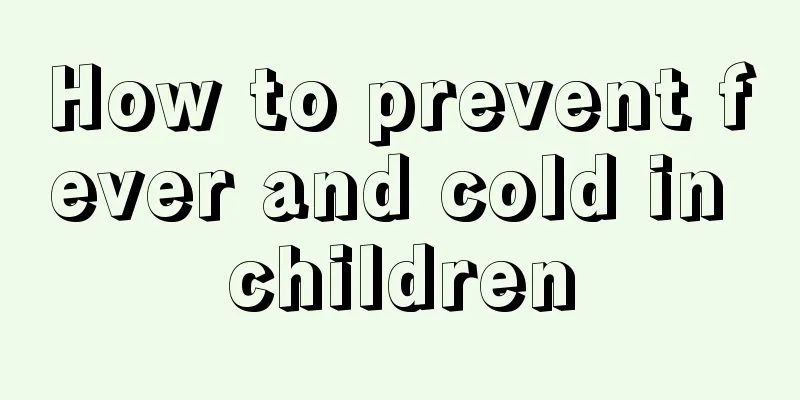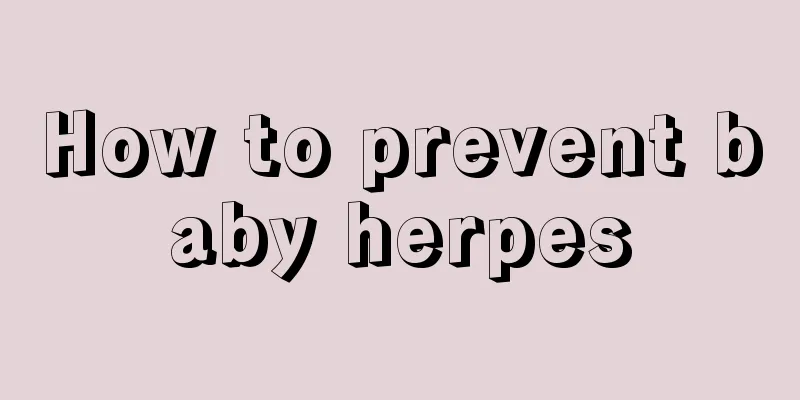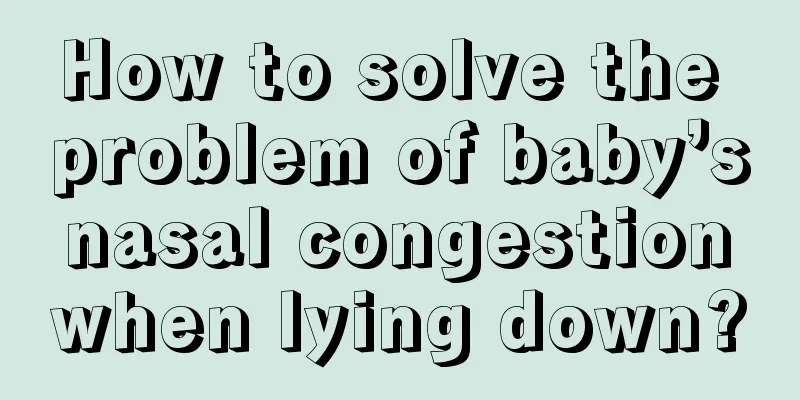What to do if your child suddenly has a high fever

|
When the weather changes drastically, parents must pay attention to giving their children more clothes to keep them warm, so as to effectively prevent the invasion of cold wind and cause symptoms such as colds. Children have relatively low immunity, so when they are attacked by a cold, the symptoms they experience often appear quickly, catching them off guard. So what treatment should be adopted when one finds that one's child suddenly has a high fever? What to do if your child has a persistent fever When your child has a high fever, use the following physical fever-reducing methods to make your child feel more comfortable: 1. Reduce clothing and quilts: When your child has a fever, remember not to let him wear too many clothes or cover him with too thick quilts. This traditional method of "covering the body to sweat" is not conducive to heat dissipation and fever reduction. Instead, it may cause febrile convulsions due to overheating. For many young babies, the body temperature can be lowered by simply reducing the number of clothes and blankets. 2. Drink more water: It helps to sweat and dissipate heat. In addition, water has the function of regulating temperature, which can lower body temperature and replenish the water lost by the body. 3. Cold compress: This method is simple and easy. Apply a cold towel to the forehead. After the towel becomes hot, soak it in cold water and apply it again. For older children, using cold water bags or ice bags may be more effective. 4. Wipe the whole body with warm water or take a bath: Undress the child, rub the whole body with a towel in warm water (about 37°C) or take a bath. This can dilate the blood vessels in the skin and increase heat dissipation; in addition, when water evaporates from the body surface, some heat will also be lost. 5. Low-temperature chamber method: Place the sick child in an environment with a room temperature of about 26°C to slowly lower the body temperature. In order to allow the skin to come into contact with the outside air and help cool down, people need to wear less clothes. If conditions permit, use air conditioning to lower the room temperature. This method is suitable for babies under 1 month old, especially in summer. Just open the baby's clothes and put him in a cool place, his body temperature will slowly drop. If your baby has chills and shivering when having a fever, you should not use the low-temperature chamber method. Things to note when a child is sick and has a fever 1. It is not a big deal if the temperature is below 38.5℃, but it should not be taken lightly. Always observe your child's mental state, measure his or her body temperature, and give him or her water frequently. Don't dress your child in too many clothes. Keep the room ventilated and prepare antipyretics for babies over 6 months old. 2. If the temperature is between 38.5℃ and 39.5℃, take antipyretics according to the instructions. Ten minutes after taking the medicine, put more clothes on your child. After half an hour, take off the extra clothes and wipe the child's body with warm water. You will see sweat coming out immediately and the child's body temperature will slowly drop. 3. Fever itself means that there is a virus in the child's body, and the child is also fighting the virus. The problem will not be solved in one go. The temperature will go up again within 4-6 hours, and you can proceed to the second step. 4. After 4-6 times, the child's temperature will be under control. 5. If the fever is above 39.5℃, you must go to the hospital. There will be no damage to the brain within 4-8 hours, but the longer the time, the worse it is for the child. At this time, you can use alcohol to wipe the palms and soles of your child's feet, but don't wipe too much. This method can quickly reduce the temperature. If there is no alcohol, you can directly wipe the child's body with tap water and then go to the hospital immediately. |
<<: Children's upper eyelids are red and swollen
>>: Emergency measures for children with high fever and cramps
Recommend
What is the height and weight standard for a 2-year-old boy?
When a baby is growing physically, each stage is ...
What to do with congenital asthma in children?
Childhood asthma is a very common respiratory dis...
How to treat the baby's nose that always has snot
Many mothers will encounter some adverse conditio...
What to do if baby has ringworm on legs
Children's skin is very tender, but you may o...
Red spots on the child
There are many reasons why children have red spot...
How to prevent intestinal diseases in children?
Gastroenteritis is mostly related to bacteria. Fo...
Can babies eat wax apples?
Wax apple is a very common fruit in daily life. I...
How to treat recurrent urticaria in children
Because infants and young children have poor immu...
Can children with acute rash be blown in the wind?
Children should not be exposed to wind when they ...
What should I do if my child has dry nasal cavity?
If a child's nasal cavity is dry, the child w...
What to do if your child's face is red, swollen or itchy
Redness, swelling and itching on a child's fa...
What to do if your baby has a runny nose in autumn
Babies may suffer from colds and runny noses at a...
What causes abdominal bloating in babies?
What causes abdominal bloating in babies? Our bab...
Why does my baby have to strain to urinate?
Many mothers judge the baby's physical health...
Reasons why babies move around when they sleep
As the weather gets hotter, many children always ...









